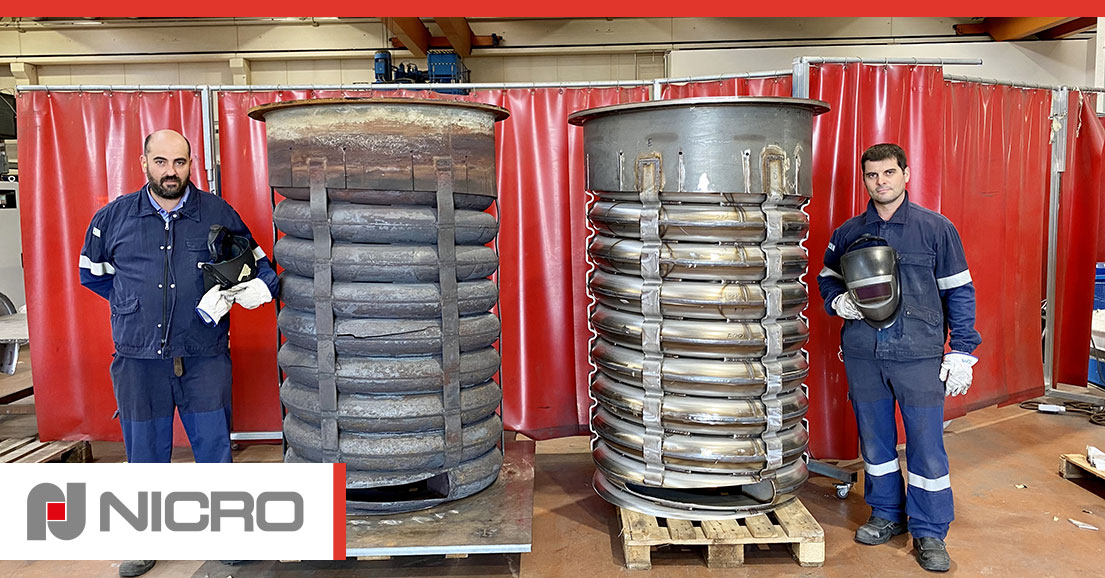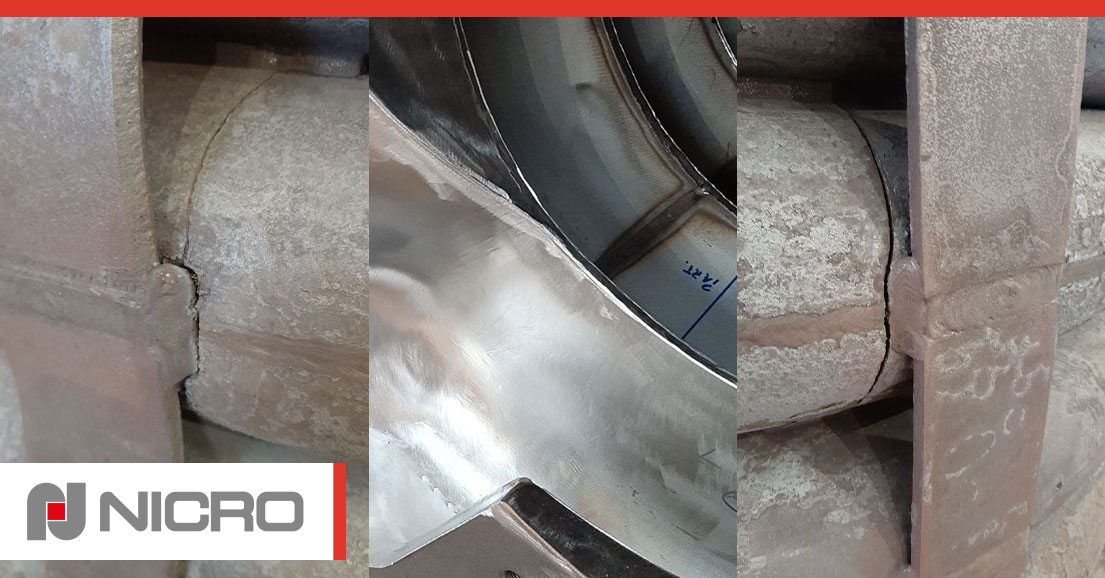How a retort for heat treatment furnace is made through reverse engineering
With over 40 years of experience in heat treatment field and thanks to an internal team specialized in reverse engineering process, Nicro has successfully performed a retort for a heat treatment furnace for bearings.
The retort is one of the fundamental components of rotary furnace as it allows to border on the atmosphere and generate the transit movement of the different pieces in treatment process.
In this project, Nicro’s priority was the creation of a tailor-made product, with big size, with shape suitable for final use and able to withstand high temperatures and stress, without any risk of breaking during expansion, which happened in past to the original piece sent to Nicro.
Here are the steps we followed for the realization of this rotary retort.

The choice of material and the creation of a customized rotary retort
The customer, an European multinational firm, producer of bearings with many factories located in different countries entrusted Nicro the task of manufacturing a new rotary retort for one of the three heat treatment furnaces in their French plant.
To realize this big retort (L = 1734 mm; Ø1002 mm), with weight Kgs. 828 and different thickness 6, 10 and 18 mm, Nicro used a very high quality stainless steel with excellent properties and suitable for this type of processing: the 253 MA (Avesta 253MA / Werkstoff 1.4835).
This material is really excellent and indeed it is the most used by Nicro in the production of parts for heat treatment such as muffles, bell furnaces, fans and of course, retorts.
Thanks to its properties, Avesta 253 MA withstands any types of stress such as heat, oxidation, corrosion and cracking and assures a long life for the product made in this way.
The first step in the manufacturing process for this retort was the creation of convex bottoms.
Then each bottom was laser cut to a suitable diameter for the retort, after which a cut was made on each bottom along the radius necessary to stretch the body and then joined it to the next bottom obtaining a particular excentric screw or worm shape.
In the initial part of the retort, the plate was also manually worked to adapt it to the double bending of the connection to the flange.
To realize the lateral support plates, Nicro decided instead to intervene in different way from the model sent by the customer.

In fact, the old component to repeat was damaged due to an unproper welding method used for the plates (welding in pieces and without corrugation), which did not allow the correct expansion of the material and causing the break of the convex bottoms.
To avoid the same problem , Nicro suggested alternatively to weld the lateral support plates in a single piece and with a corrugation at each step.
Then the support plates were joined to the bottoms and thanks to this operation the stress on the welds is certainly less and can assure longer life and more resistance to the product.
In this way, starting from an existing model, Nicro has not only created a completely new and customized product but has also provided to the customer valid alternatives to increase the resistance of the rotary retort.
Once again an excellent project completed thanks to qualified personnel, experience in the sector and a careful reverse engineering process that has allowed us to build a totally customized product.
